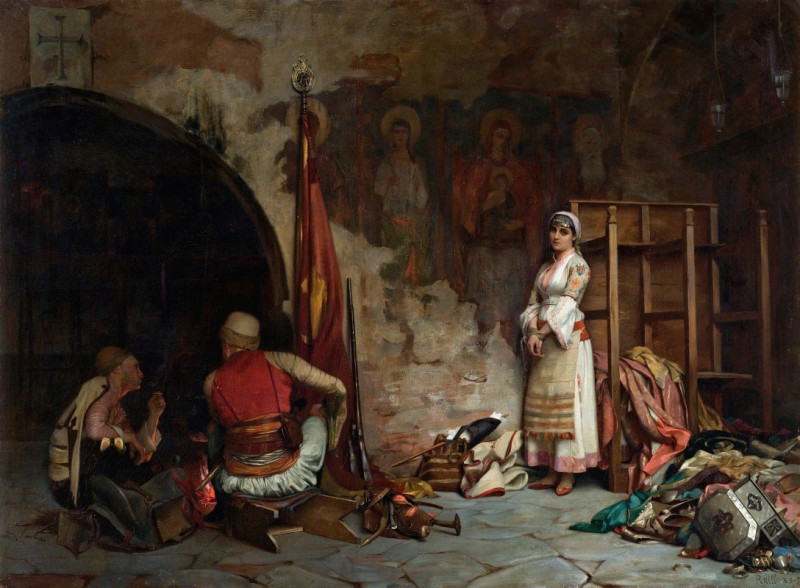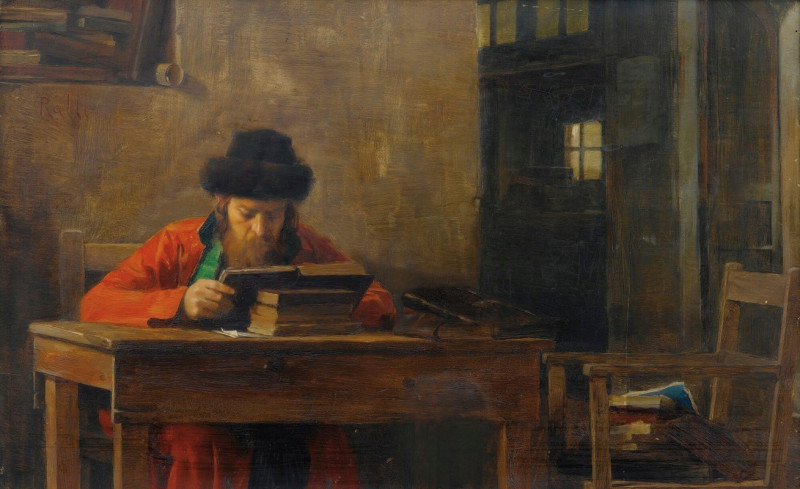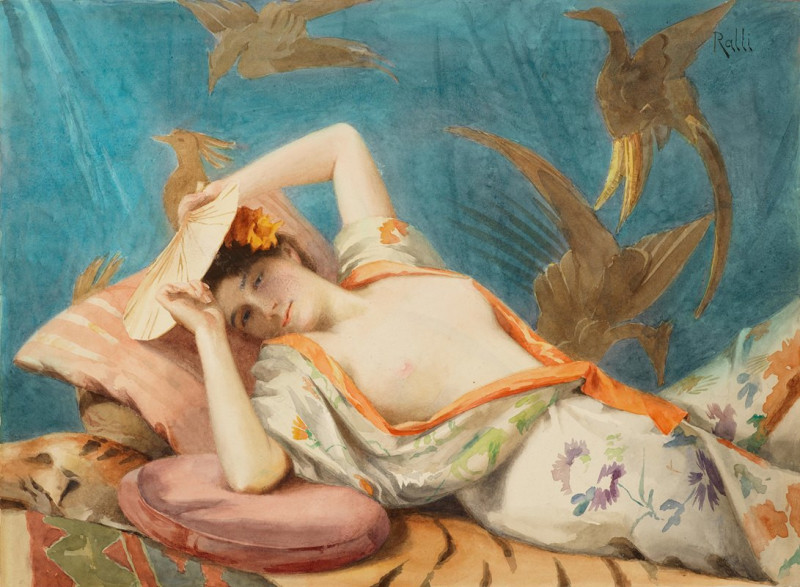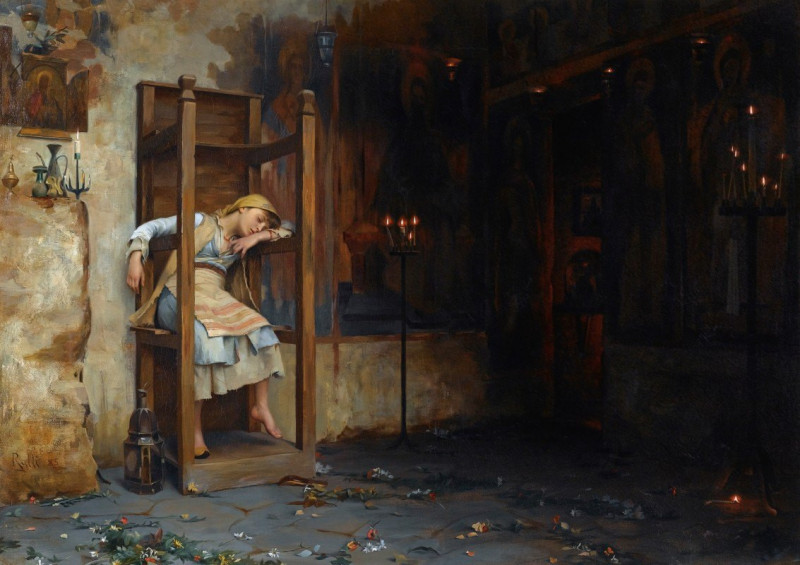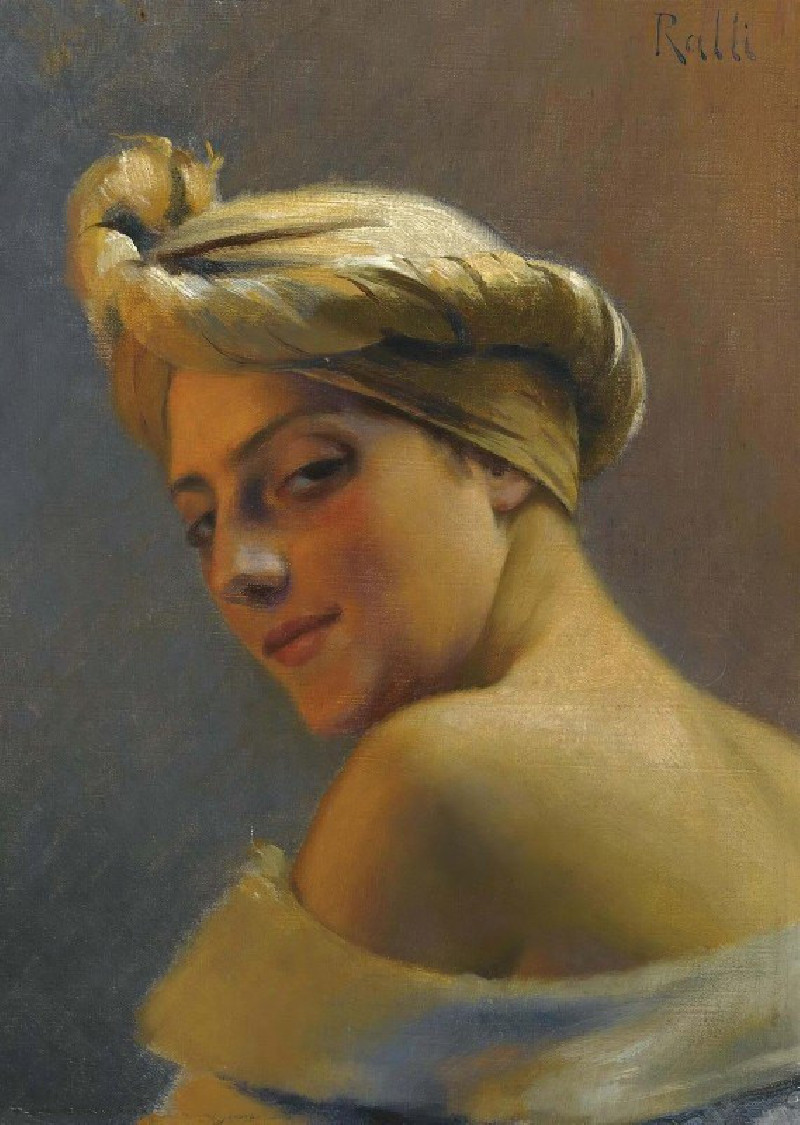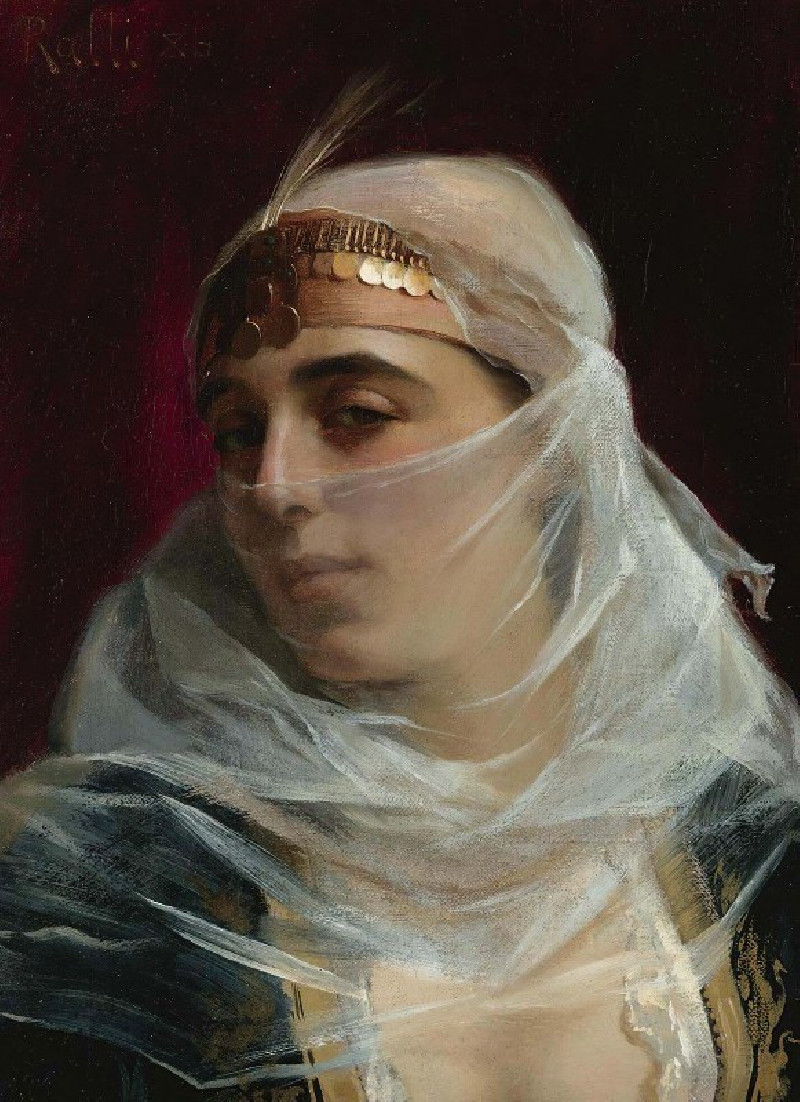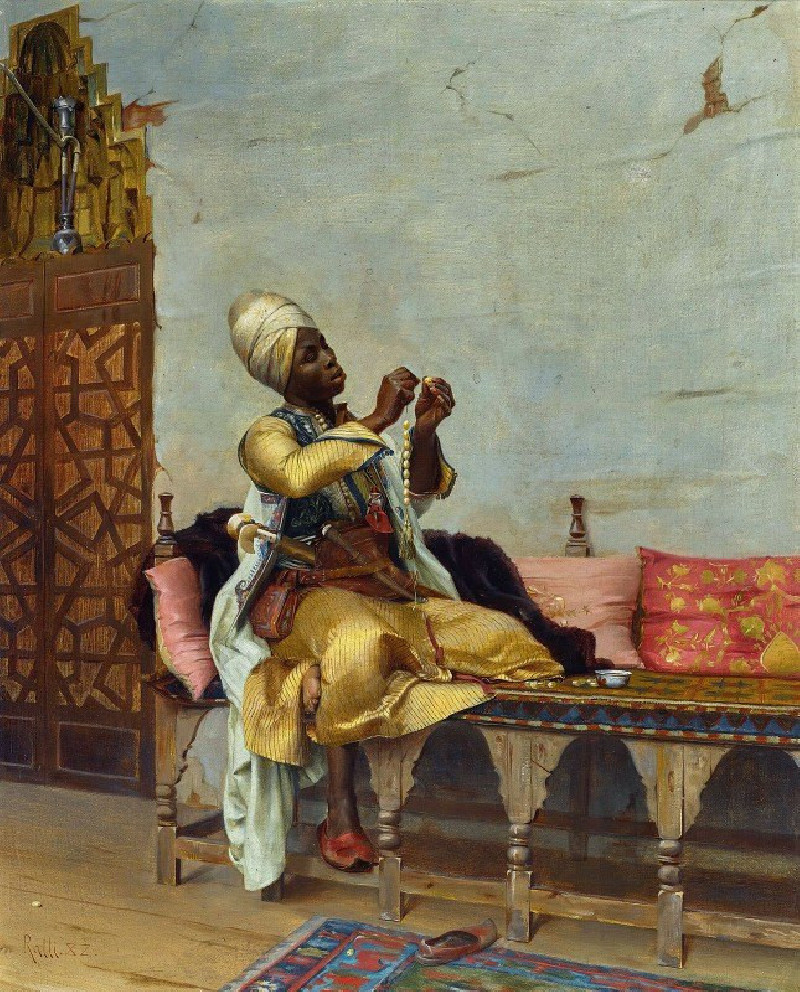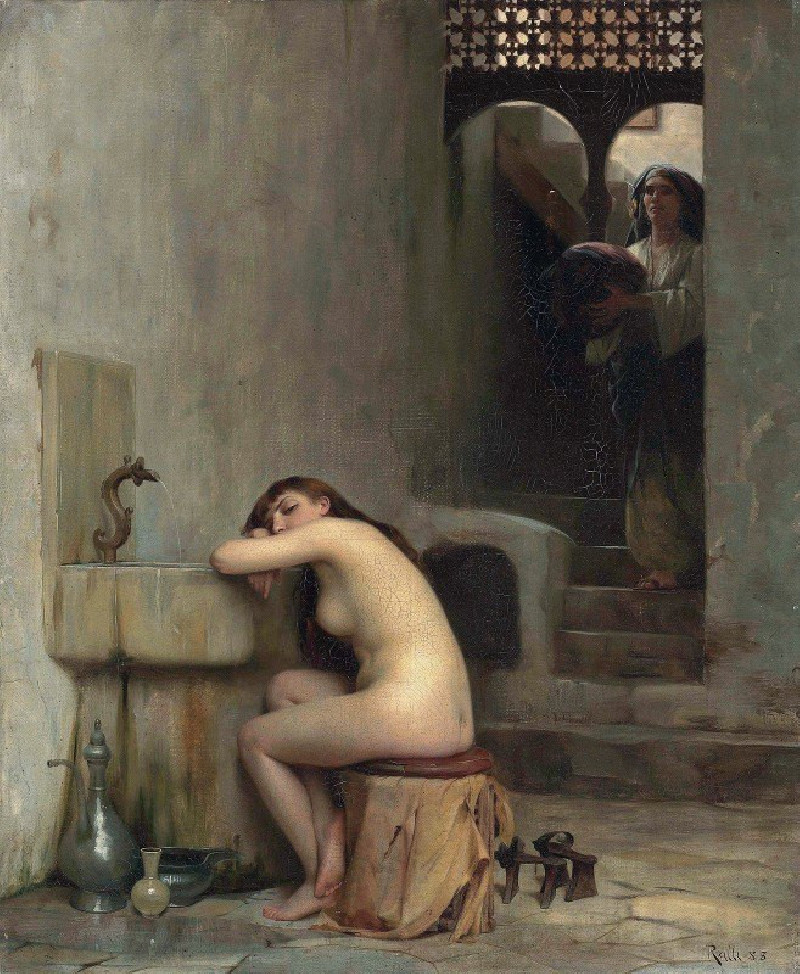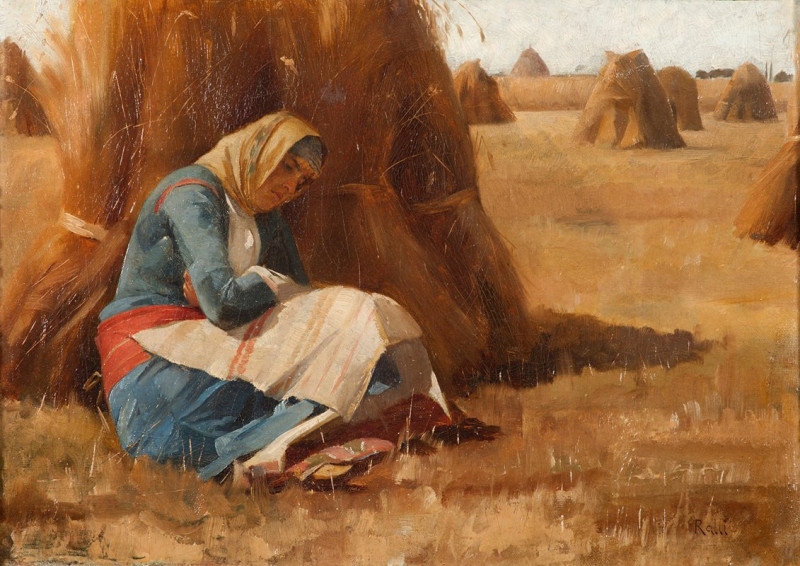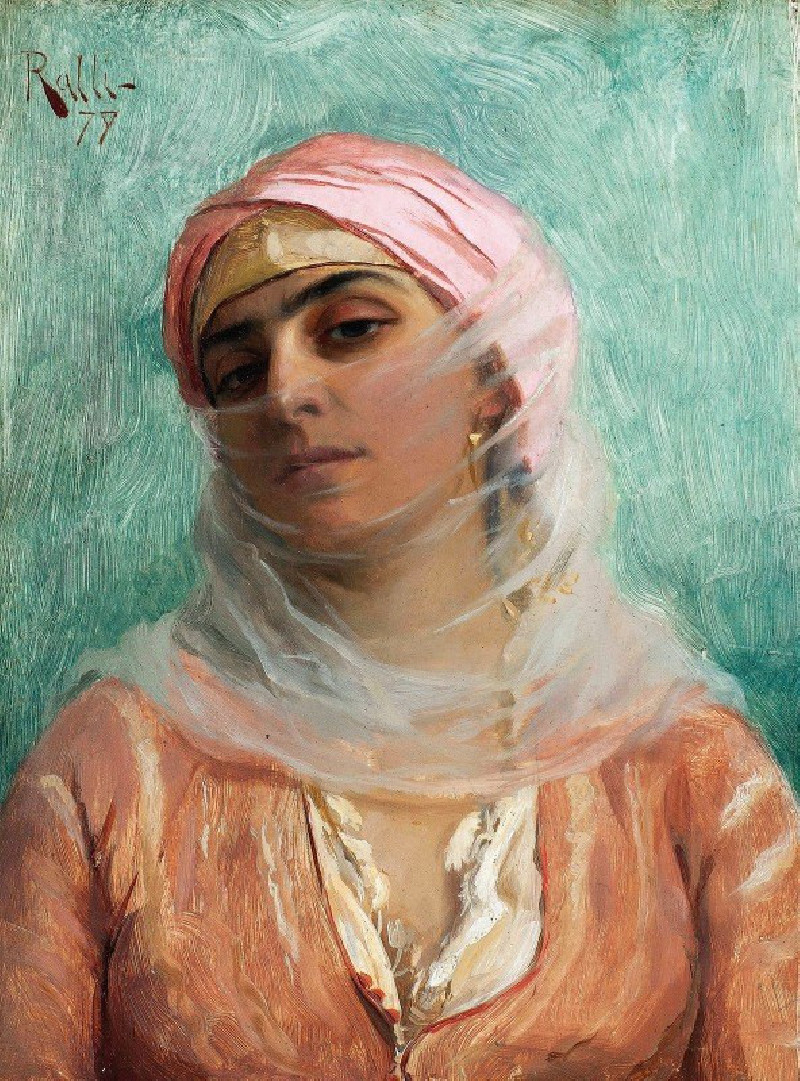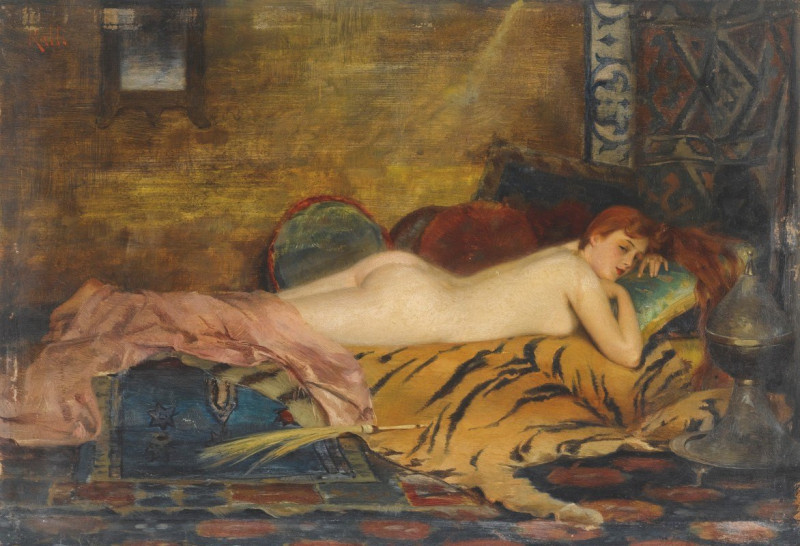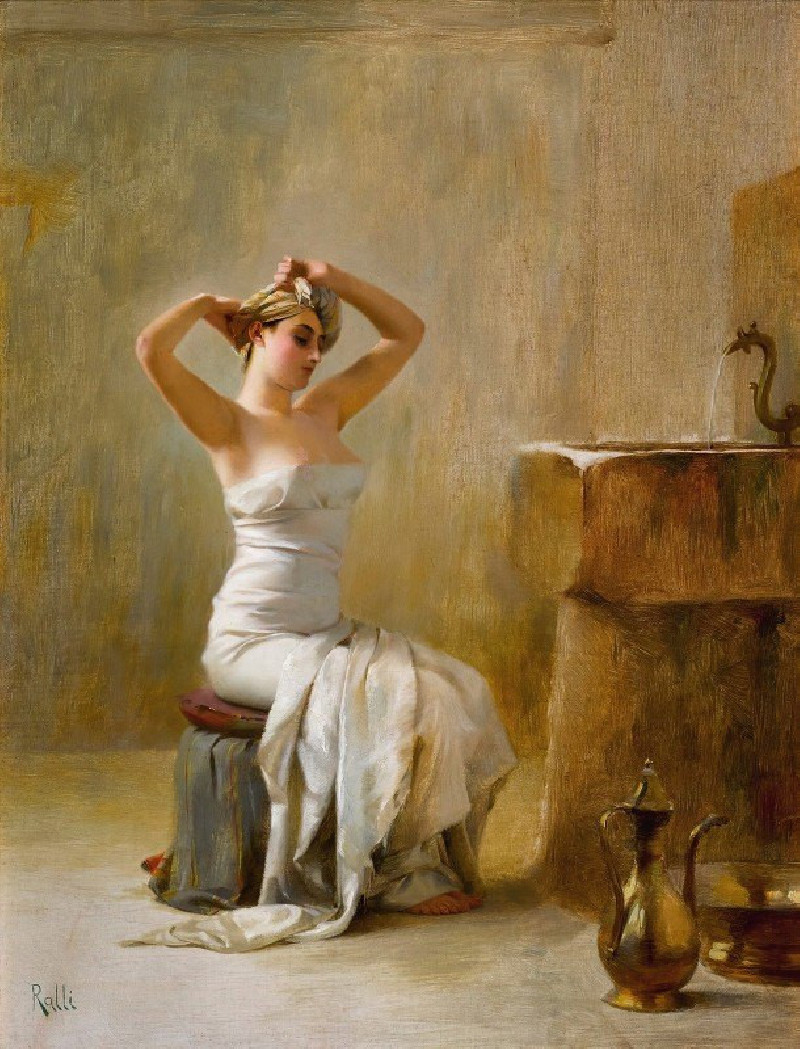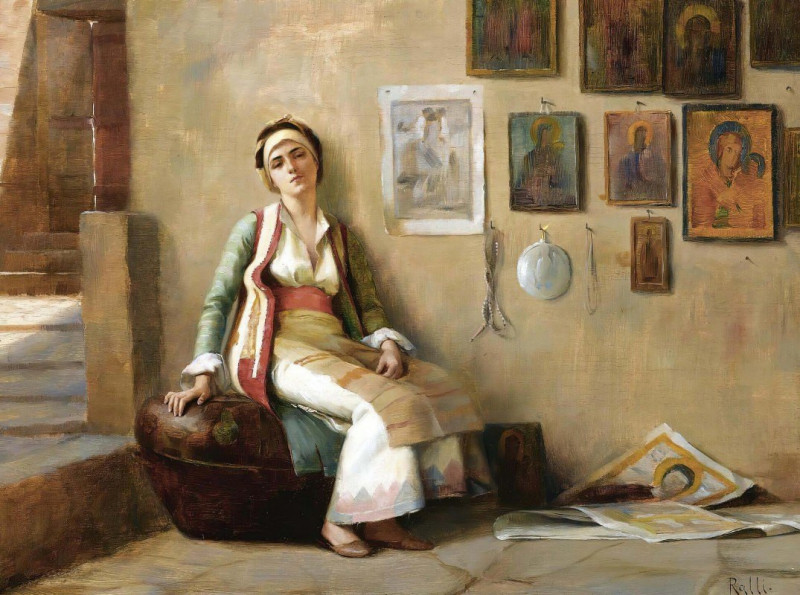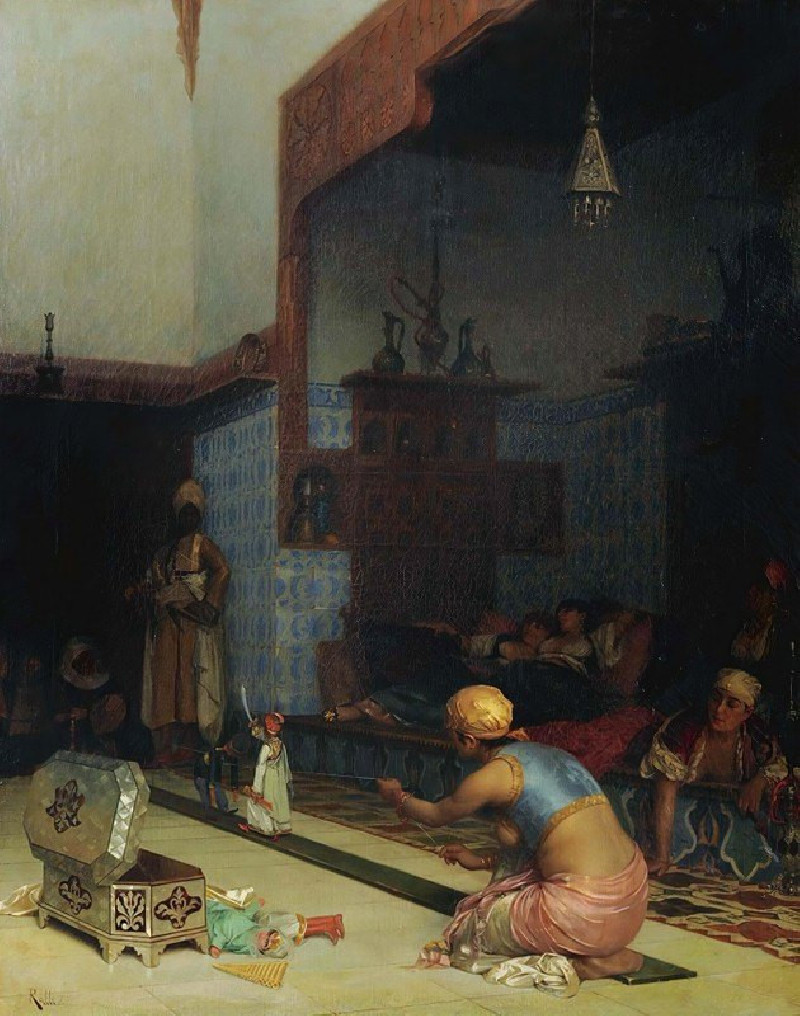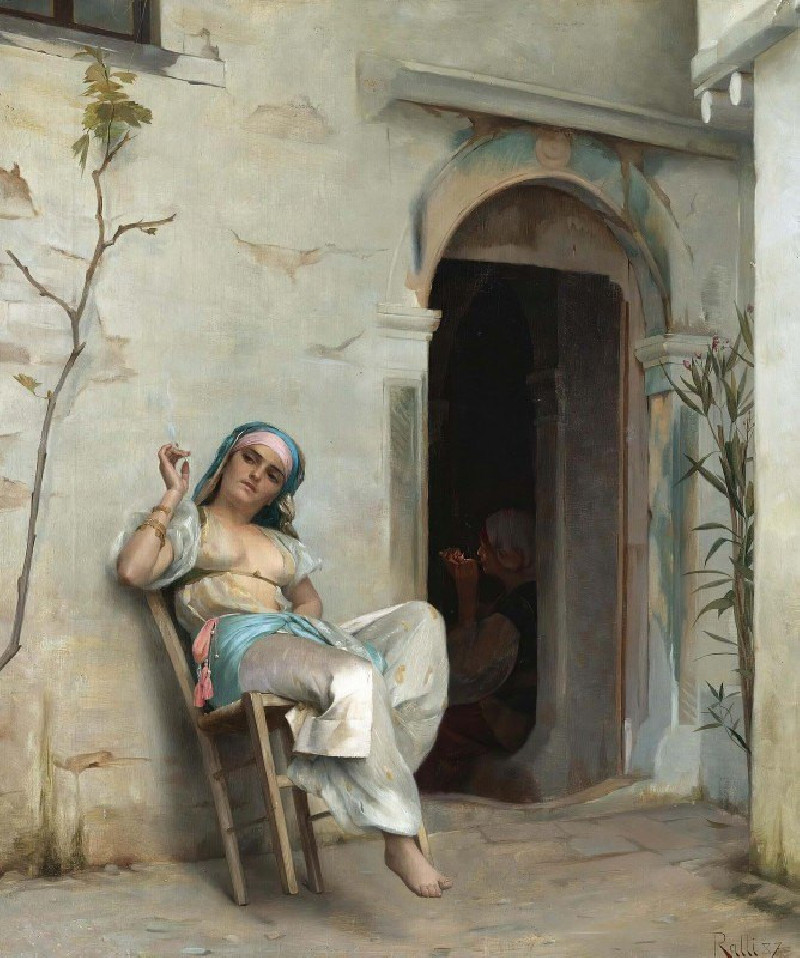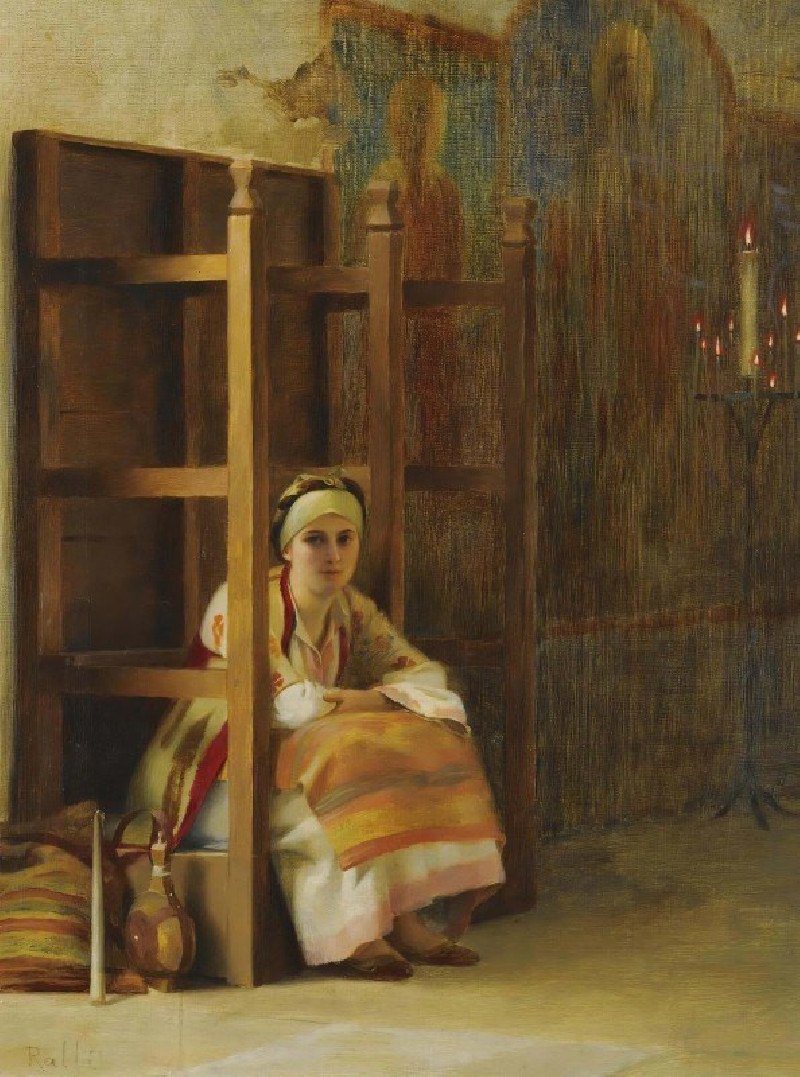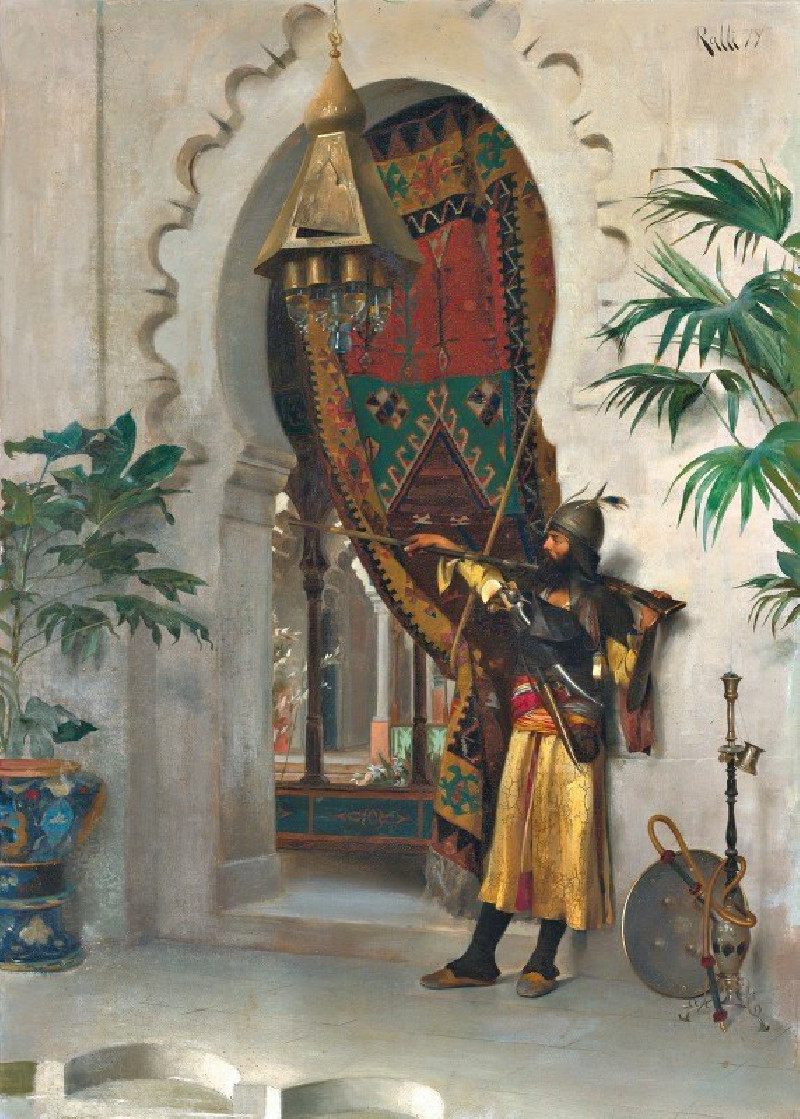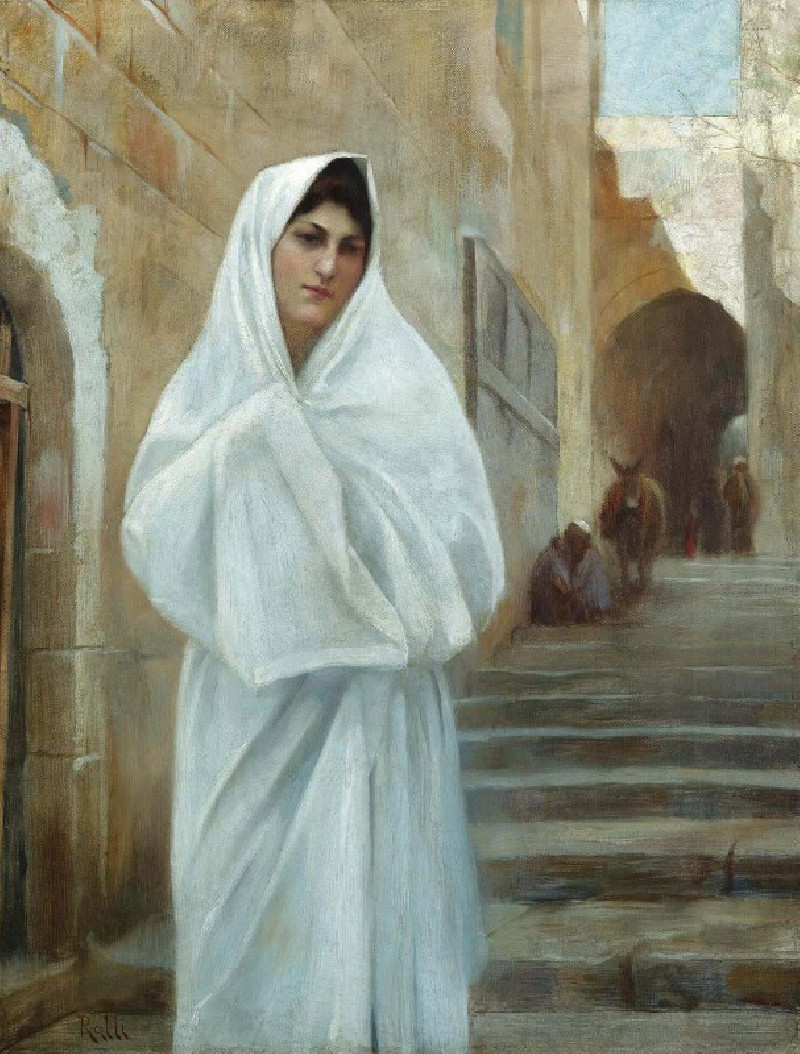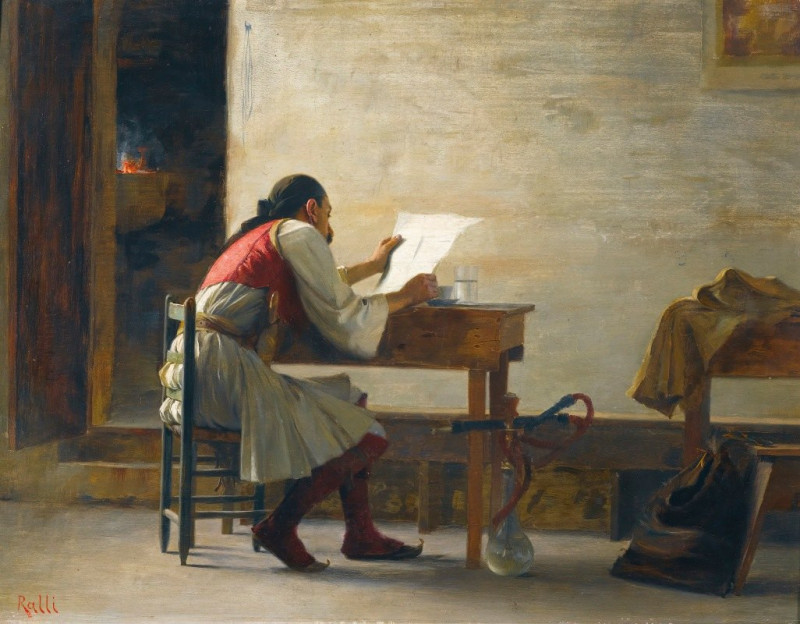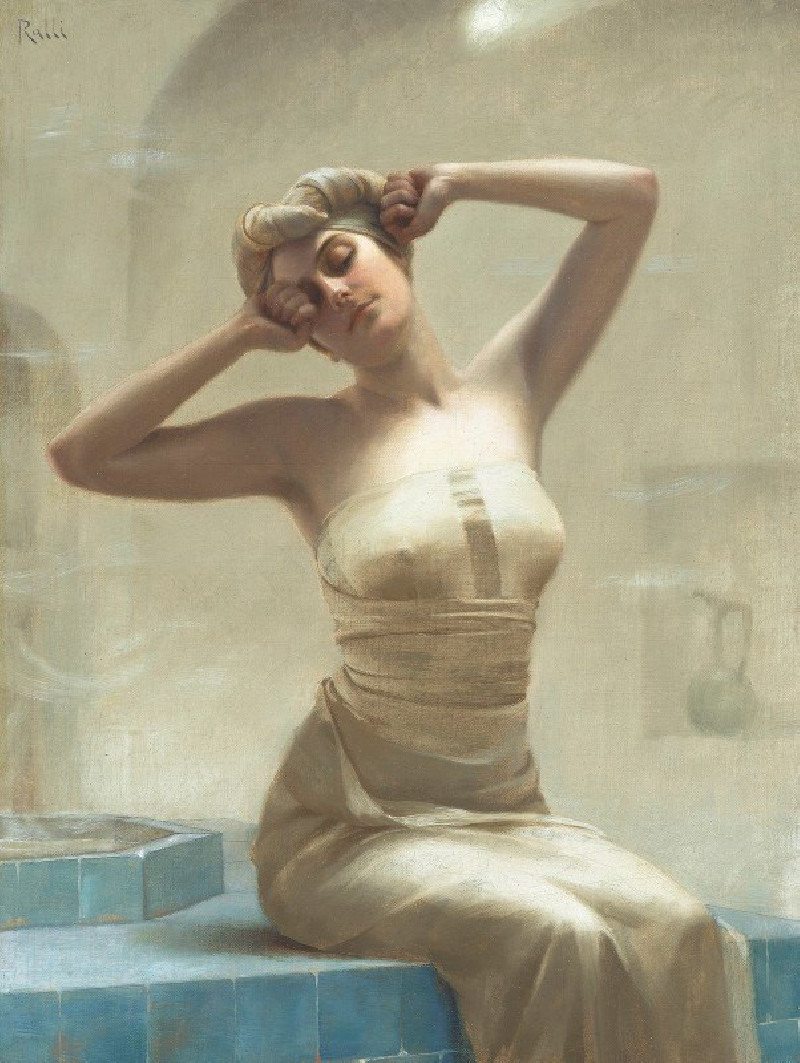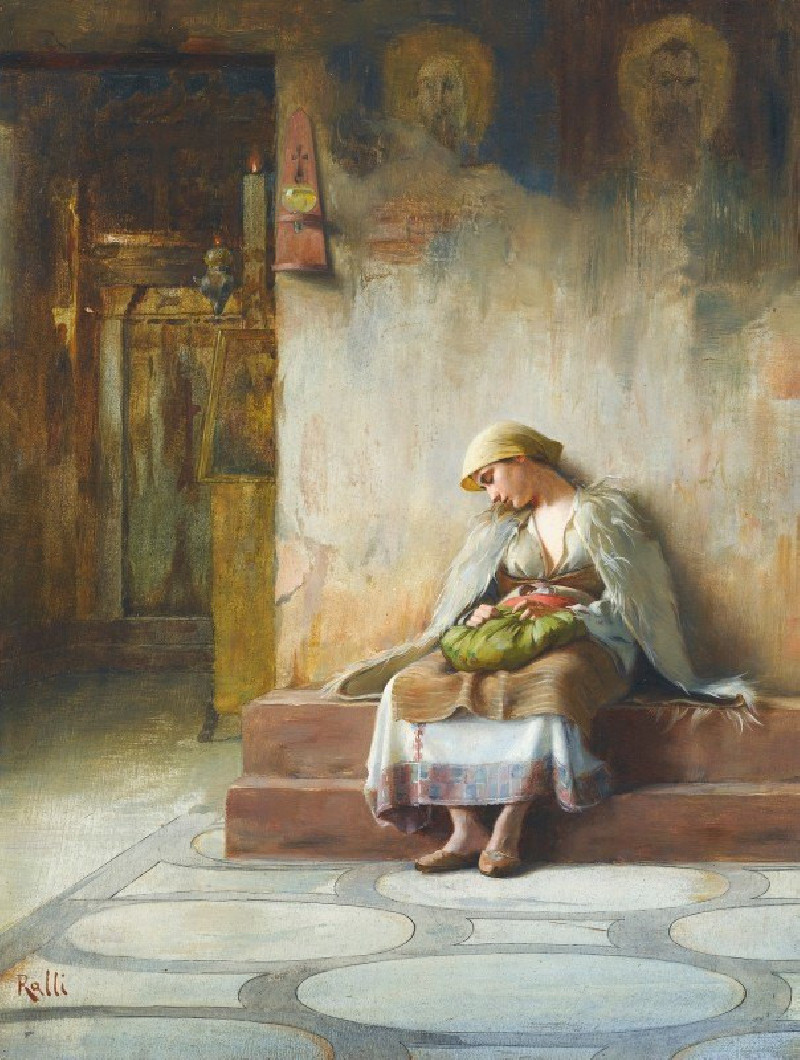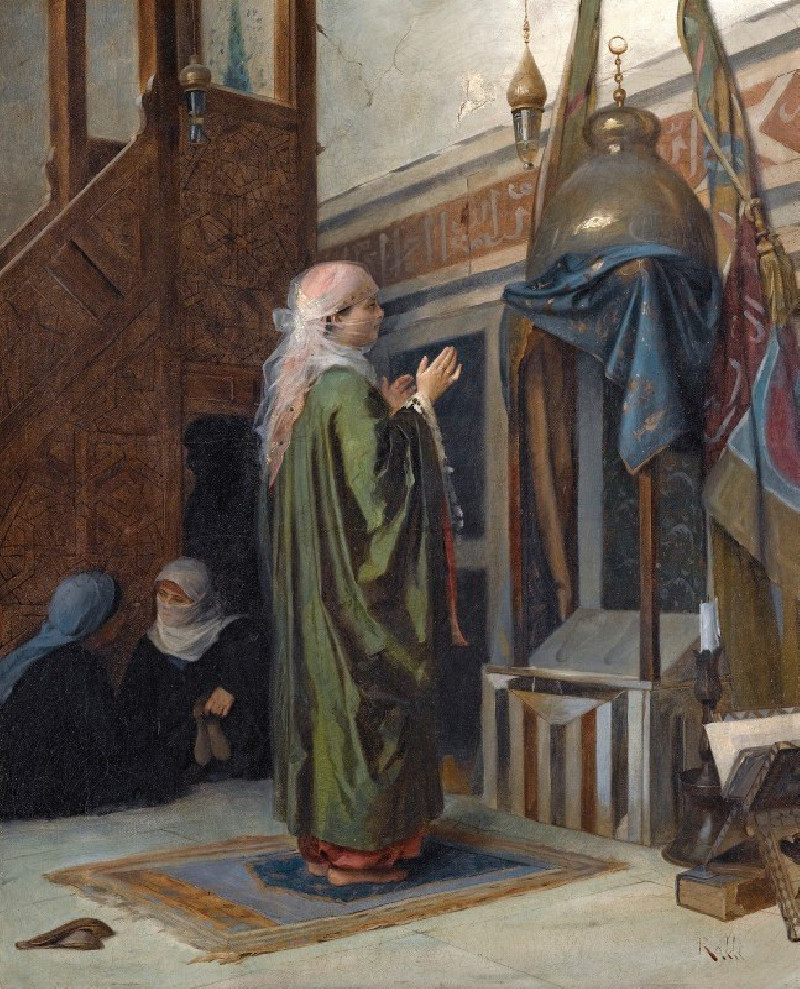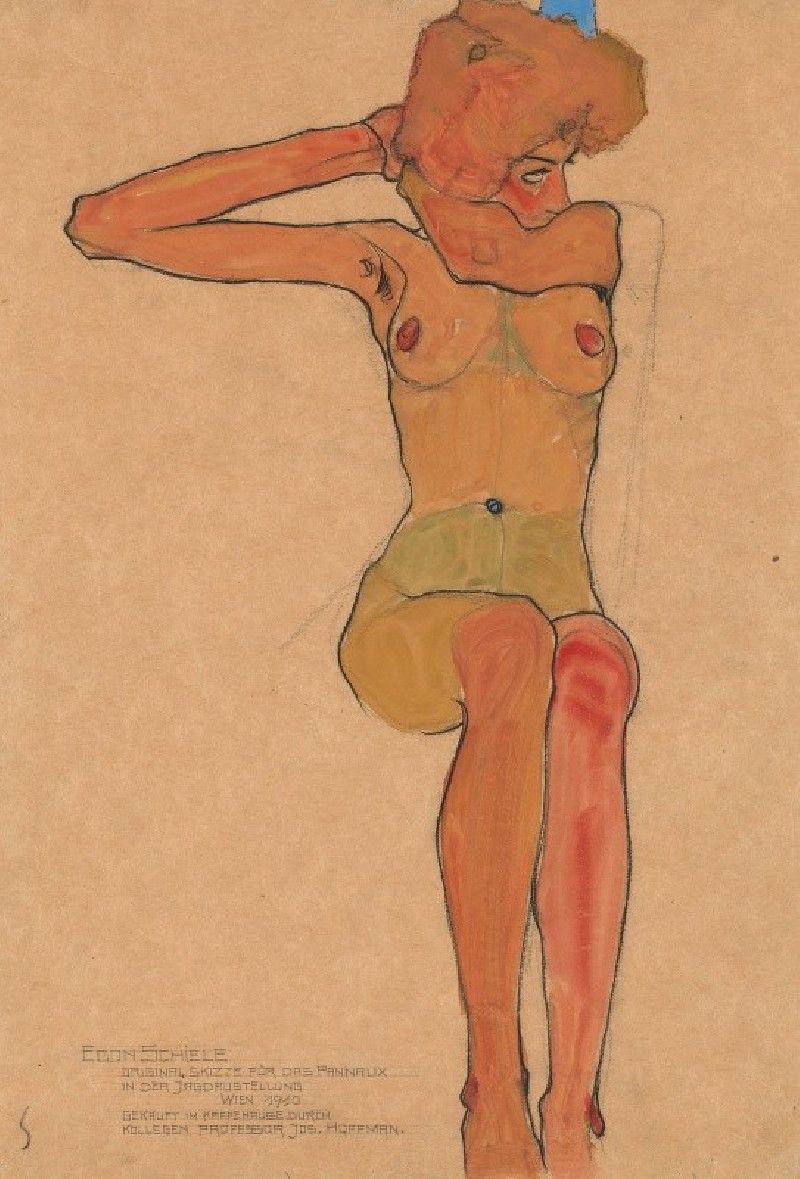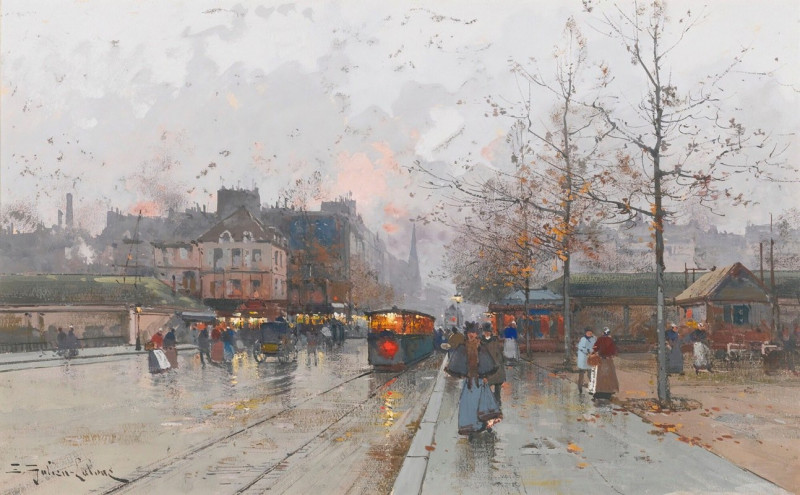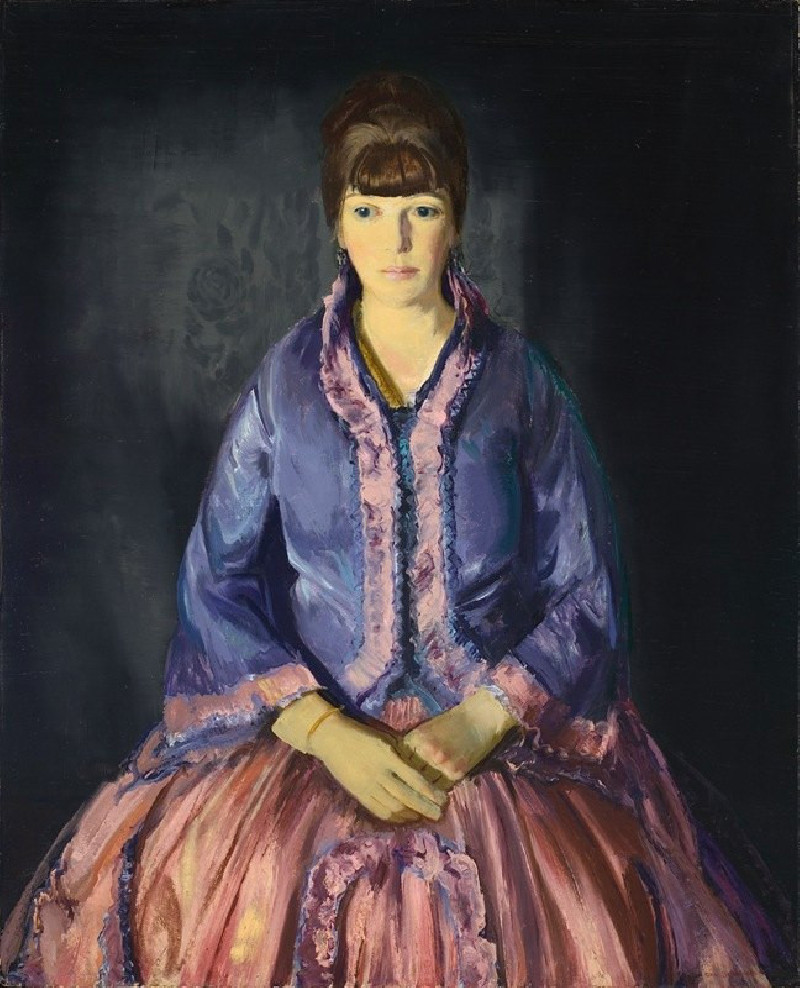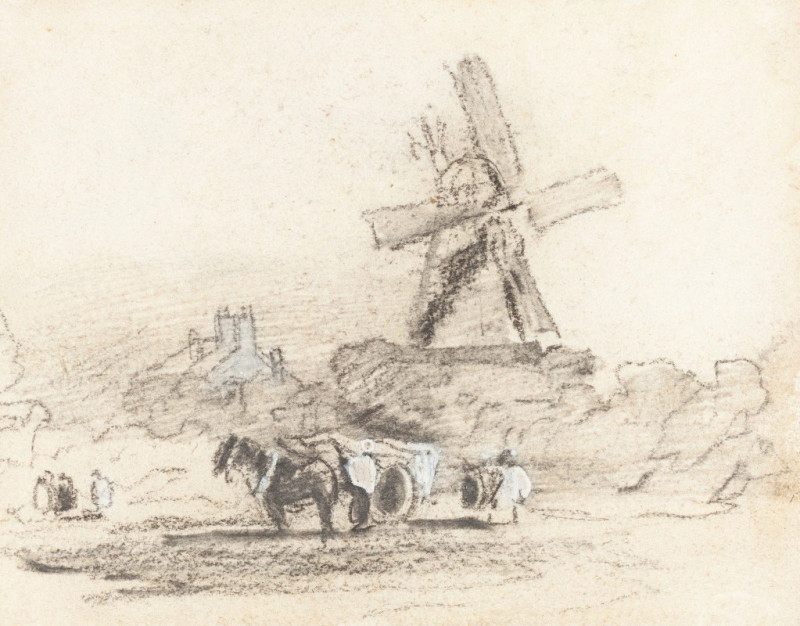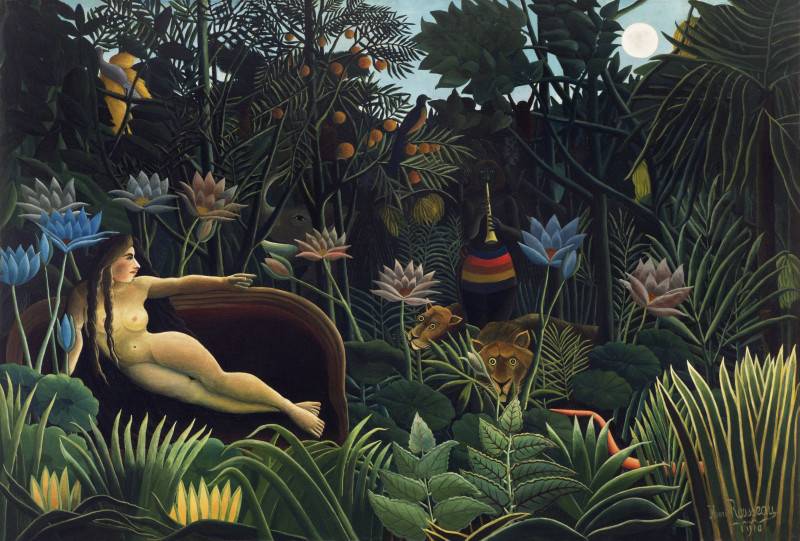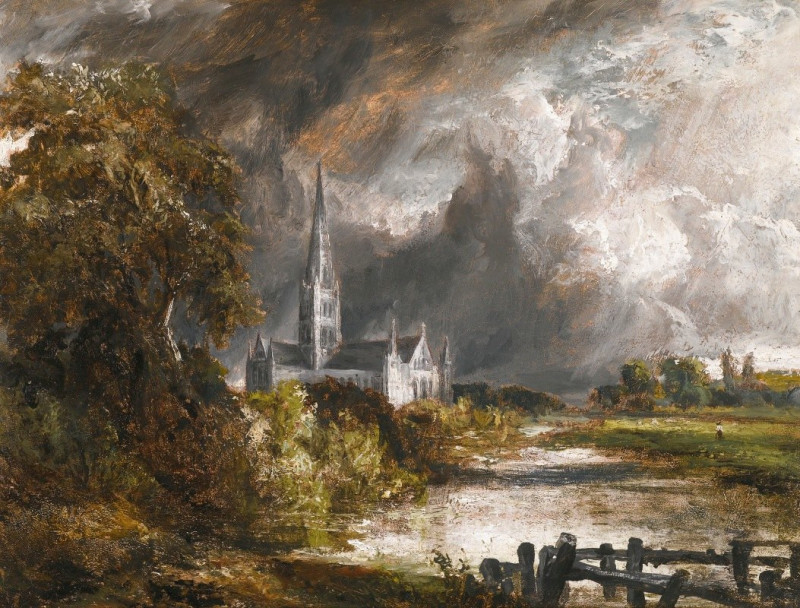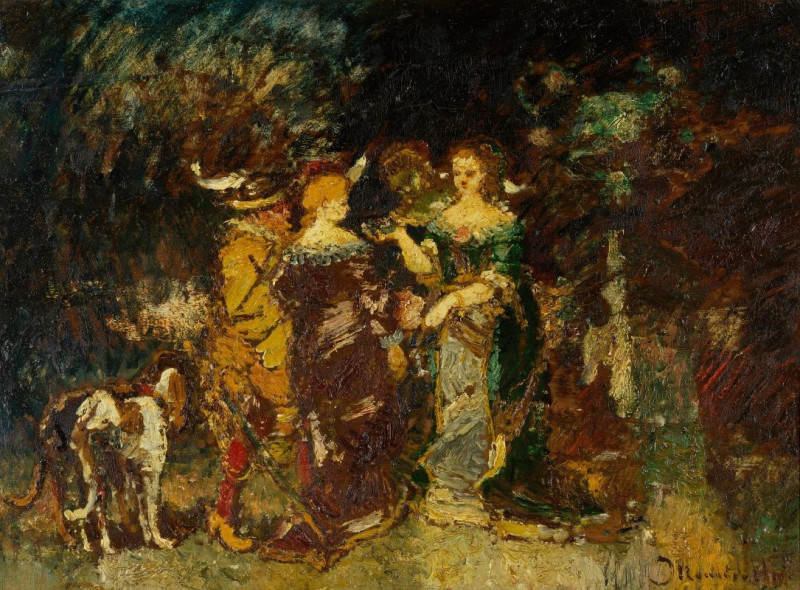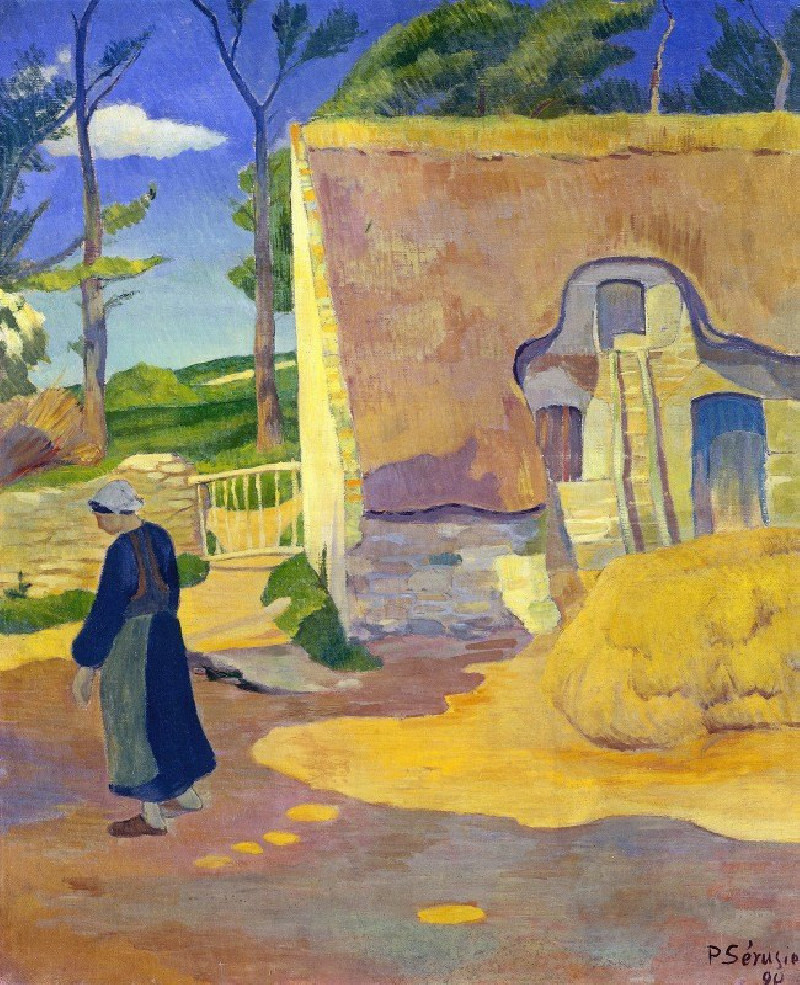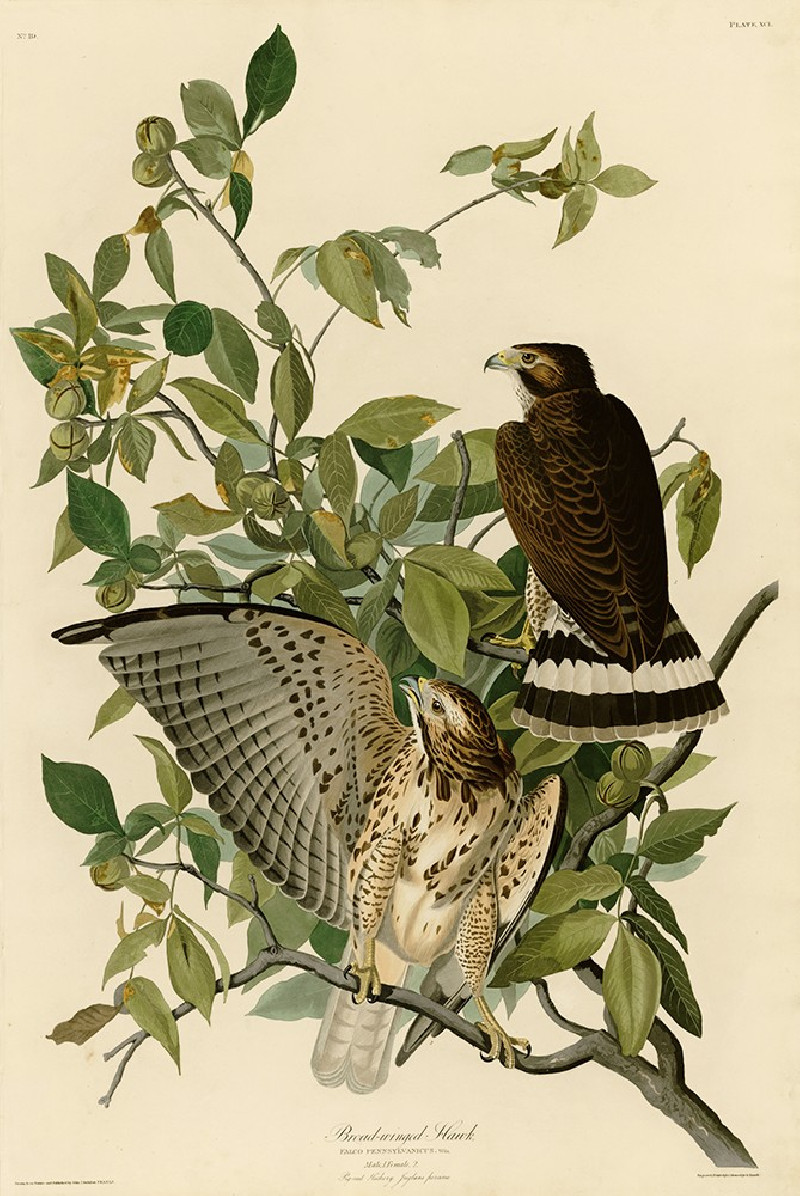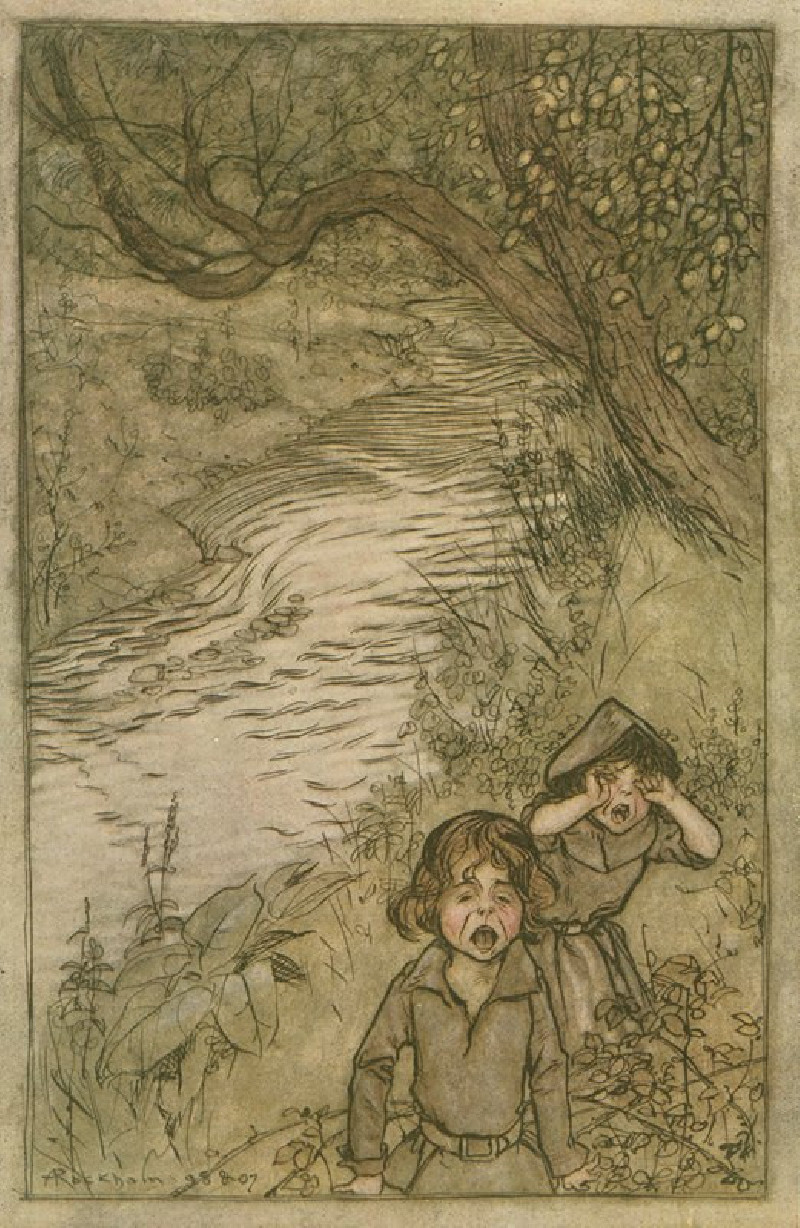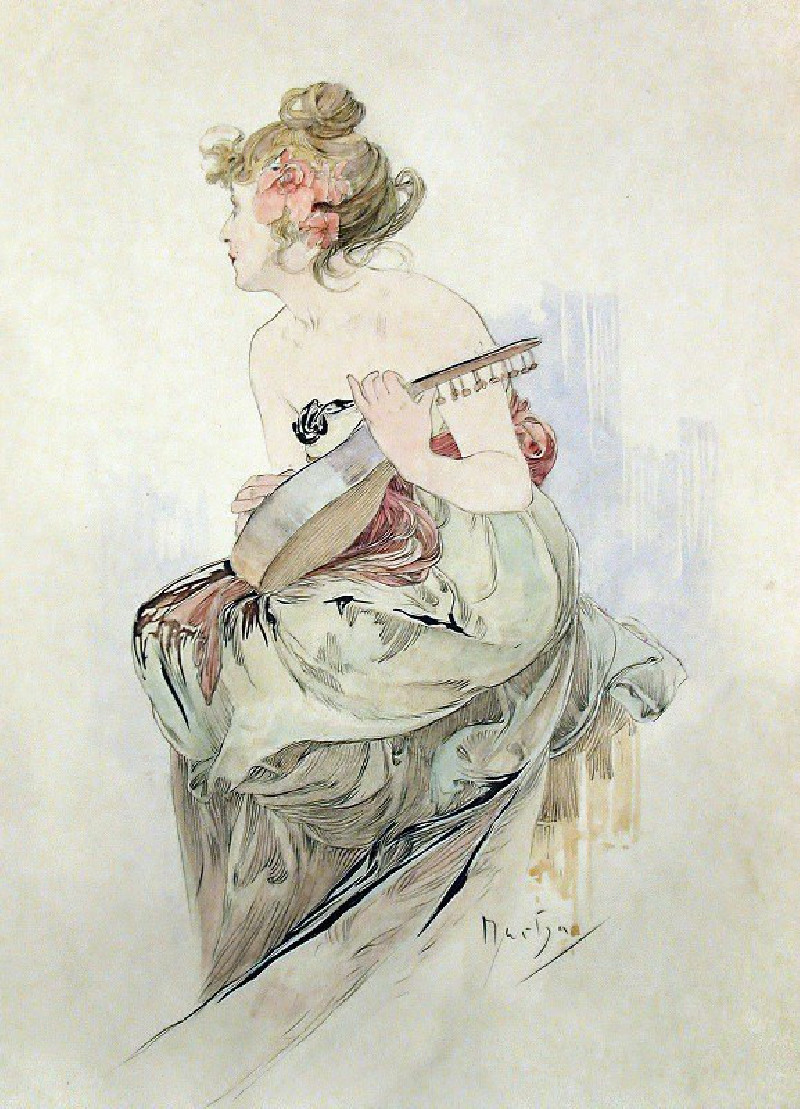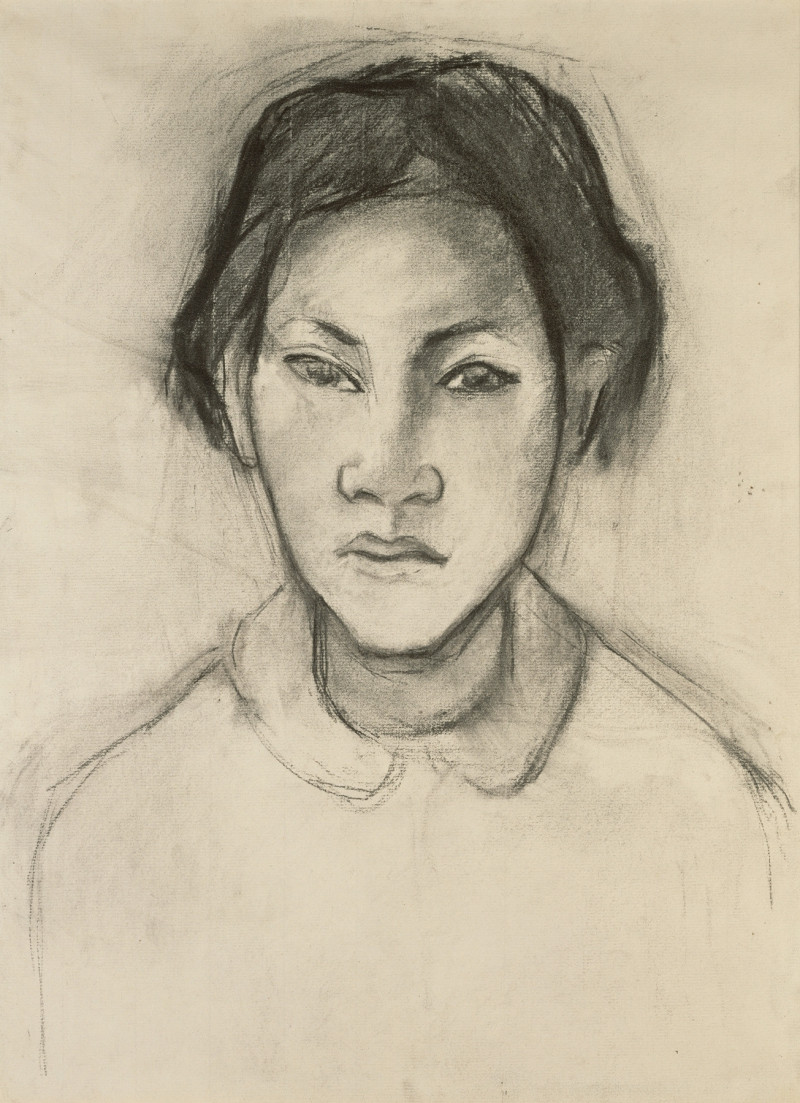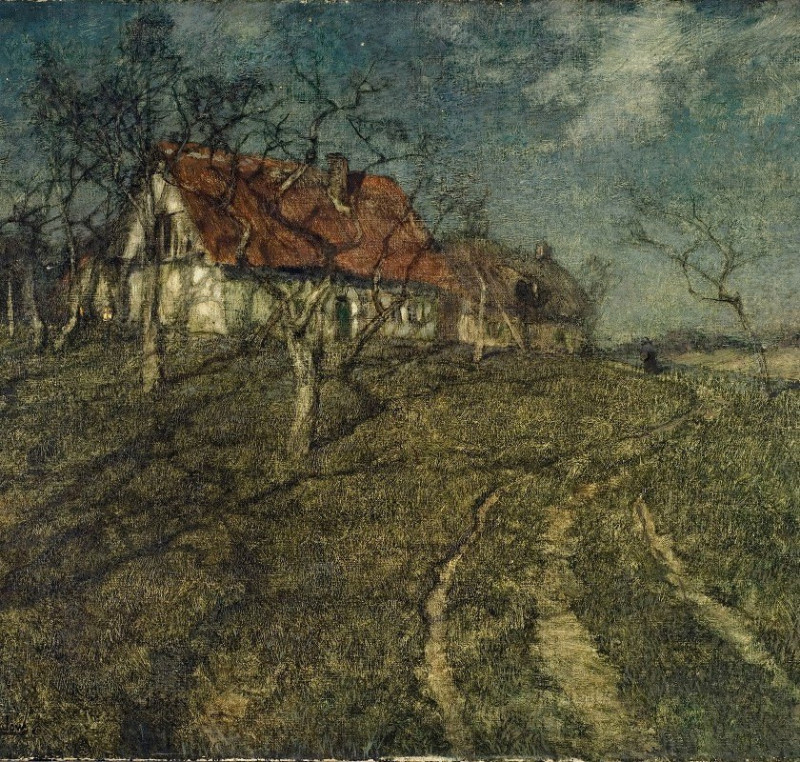The Captive (Turkish Plunder) (1885)
Technique: Giclée quality print
Recommended by our customers
More about this artwork
The painting "The Captive (Turkish Plunder)" by Theodoros Ralli, created in 1885, invites viewers into a dramatic historical scene, laden with emotion and cultural tensions. This evocative work captures a moment that seems both timeless and frozen in its historical context.In this captivating scene, the focus is drawn towards a young woman standing off to the right, her posture tense and her expression imbued with a haunting blend of defiance and resignation. She is dressed in traditional, vibrantly embroidered attire, suggesting her cultural identity and hinting at her significance within the narrative as possibly a figure of nobility or importance.To the left, the interior of what appears to be a dimly lit, archaic room is illuminated subtly, revealing two men engaged in conversation. These figures, likely soldiers given their attire—characterized by bright, richly colored fabrics and traditional military accessories—seem oblivious to the woman’s plight. Their relaxed postures and deep engagement in their dialogue contrast sharply with the woman's solitary confinement.The backdrop of the room is a rich tapestry of historical symbolism. A wall adorned with religious icons underlines the deep cultural and spiritual dimensions of the scene. Various items of plunder scattered on the floor—a helmet, a richly adorned chest, and luxurious fabrics—tell a story of conflict and conquest, suggesting that the setting might be a temporary encampment or a requisitioned space during a turbulent period.Theodoros Ralli’s use of lighting, color, and meticulous detail not only highlights the central figures but also evokes a palpable sense of atmosphere and tension.
Delivery
Returns
Théodore Jacques Ralli or Theodorus Rallis was a Greek painter, watercolourist and draughtsman, who spent most of his working life in France and Egypt. He painted genre works, portraits, local figures, architectural subjects, interiors with figures and animals. But he is best known for his orientalist paintings.

